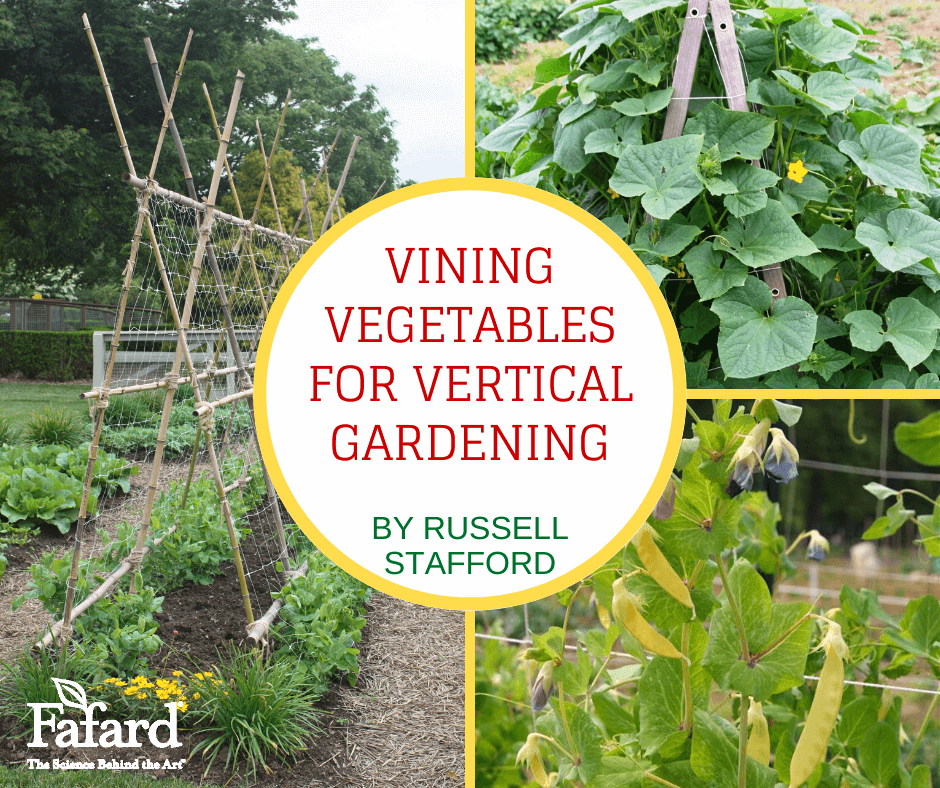
Don’t have as much space for growing vegetables? Then maybe it’s time to go the way of Jack with his beanstalk. Numerous veggies are vines perfectly suited for training up a trellis, thereby taking advantage of upright, aerial space. Vertical veggies also hold their fruits clear of the ground, reducing their susceptibility to rot. Three-dimensional gardening offers multiple advantages.
There are a couple of common trellis types. Crosswise bamboo trellises fitted with trellis netting is an easy way to go. Twine strung between sturdy stakes or posts provides an excellent trellis for most vertical vegetables. Run a horizontal length of twine along one side of the plant row, then loop it back on the other side to secure the stems. Add a new tier of twine every 8 to 12 inches or so to keep pace with the vines. Alternatively, you can secure your climbers with twist ties or snippets of string. Some veggies help by self-attaching with “grasping” structures such as tendrils.
Orient the trellis rows north to south, so both sides get similar amounts of sun. If the soil needs more organic matter, till in a couple of inches of Fafard® Premium Natural & Organic compost or Garden Manure Blend before constructing the trellis and sowing seed.
I featured three climbing veggies – Malabar spinach, scarlet runner beans, and purple pole beans – in last month’s “Easy, Attractive Vegetables for Any Garden”. Now we’ll go further.
Pole Beans
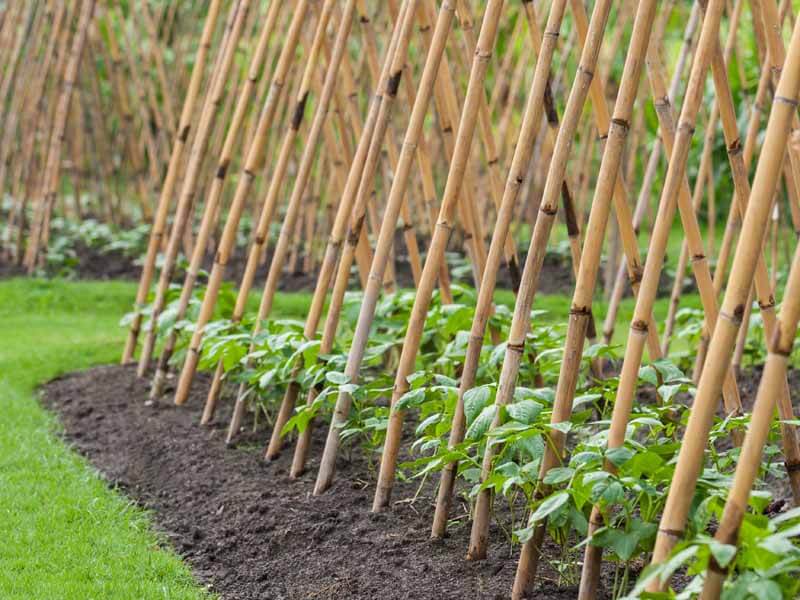
String or snap beans (Phaseolus vulgaris) are undoubtedly the aerial champions of the veggie tribe. The ever-popular snap (or string) bean comes in a variety of twining forms, including the purple-fruited varieties profiled in last month’s article. All are wonderful for threading through a twine trellis, or for growing up a teepee of tall stakes. They include:
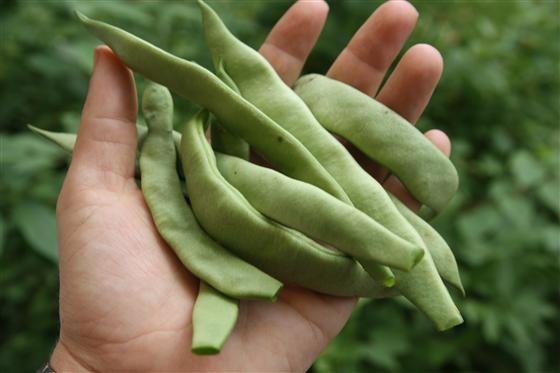
- Standard-issue green beans. Heirloom favorites ‘Blue Lake’ and ‘Kentucky Wonder’ both are available as climbers (many gardeners favor them over the bushy versions because they are more productive). More recent introductions include ‘Fortex’, featuring long slender pods that ripen relatively early, and somewhat shorter-podded ‘Malibu’.
- Speckled beans. The tan, purple-streaked pods of the heat-tolerant variety ‘Rattlesnake’ are borne most prolifically in areas with long growing seasons, making it a great choice for Mid-Atlantic and Southeast gardens. Speckled varieties for cooler climates include ‘Cascade Giant’, a prolific producer of large beans that are similar in coloration to ‘Rattlesnake’.
- Flat, Romano beans. Among the best romano varieties for cooler climates is ‘Northeaster’, with tender 7-inch beans that ripen some 55 days after sowing. For a later, longer harvest, try ‘Helda’, which produces tasty 9-inch pods for much of the summer.
- Yellow wax beans. The 5-inch pods of ‘Grandma Nellies Yellow Mushroom’ have a wonderful rich complex flavor that really does have hints of chantarelle. Many of the best wax pole beans are also golden romano types. These include ‘Goldmarie’ and the Italian heirloom ‘Marvel of Venice’, which also has pinkish-purple flowers.
- Shelling beans. Grown for their colorful and flavorful seeds that are shucked from the pods late in the season, these varieties are sometimes also excellent as snap beans. One such variety is the heirloom ‘Cherokee Trail of Tears’, whose tasty pods yield shiny black seeds if left on the vine. Another excellent multi-purpose American Indian heirloom variety is the white-seeded ‘Hidatsa Shield Figure’, named for the seeds’ oblong tan markings.
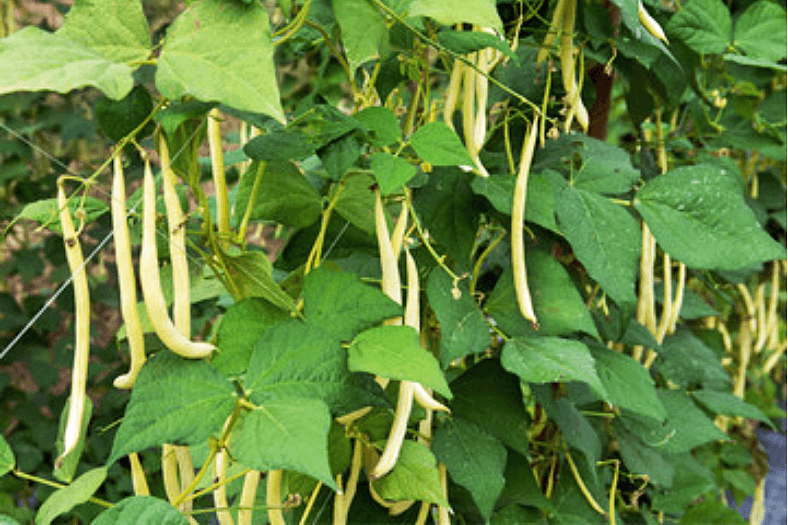
Lima beans or butter beans (Phaseolus lunatus) are grown for their broad, flattened, buttery seeds, lima beans are a much more diverse tribe than the frozen food section of your local supermarket might lead you to believe. The heirloom ‘Willow Leaf’ bears small, meltingly succulent, greenish-white limas, borne on disease-resistant vines furnished with distinctive narrow foliage. A favorite of Thomas Jefferson, ‘Sieva’ also produces small whitish scrumptious limas, but on high-climbing vines with broad leaves. Some Phaseolus lunatus varieties are brightly colored, as is the case with the heirloom ‘Christmas’. It yields large, white, heavily red-splotched limas on tall disease- and heat-resistant vines.
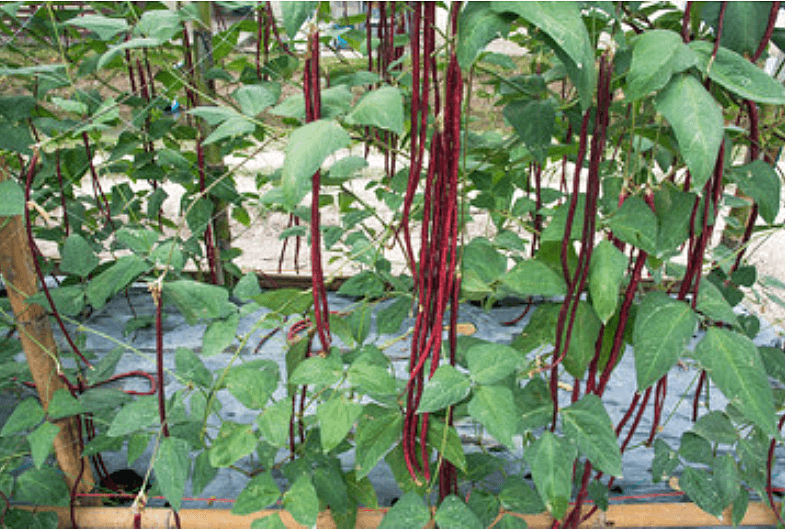
Yardlong beans (Vigna unguiculata) are East Asian legumes grown for their remarkably long slender beans that ripen all summer on tall, vigorous, exceptionally heat-tolerant vines. Look for ‘Chinese Red Noodle’, with deep red, 18-inch beans; ‘Chinese Mosaic’, with pale purple pods; and ‘Taiwan Black’, which produces 40-inch-long fruits studded with black seeds.
Other Vigna unguiculata varieties are grown expressly for their seeds, commonly called cowpeas, rather than their pods. Many of these varieties also grow as vines, including ‘Whippoorwill White’, ‘Blue Goose’, and another Thomas Jefferson favorite, ‘California Blackeye’. All varieties of the species do best in areas with hot summers and long growing seasons.
Peas
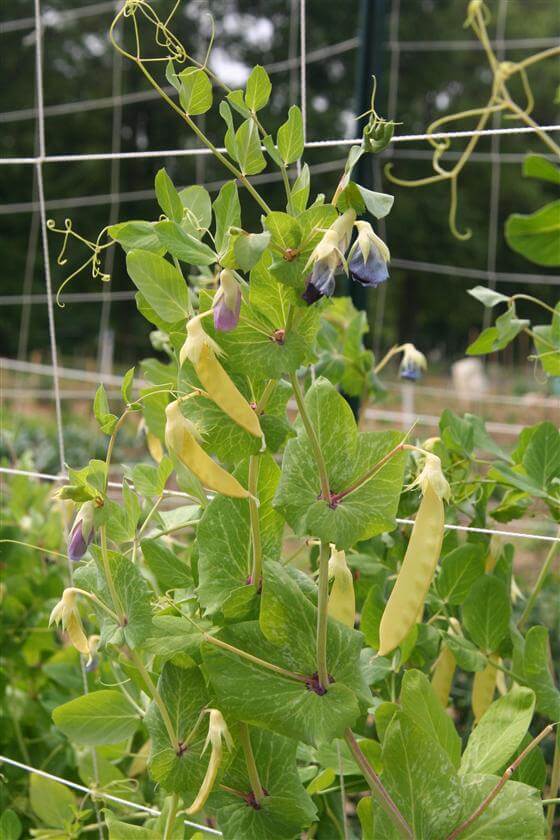
Many shelling, snap, or snow pea (Pisum sativus) varieties produce long stems furnished with clasping tendrils to hold them upright. They grow best in spring, fall, or areas with cooler summers, so keep this in mind before planting them. The tallest varieties such as ‘Tall Telephone Pole’ will top out at 6 feet or more. Some peas grow as low bushy plants, so be sure to check before purchasing. (Click here to learn more about growing peas.)
Tomatoes

Tomatoes (Solanum lysopersicum) are often described as growing “on the vine”, and many of them do exhibit clambering, vine-like growth. Yet relatively few gardeners treat them that way. To trellis your tomatoes, start with an “indeterminate” variety – the term for types that keep lengthening their stems rather than growing to a certain height and stopping. Train the plant’s main stem up a sturdy twine trellis as described above, pinching out any side suckers that appear. Rampant varieties such as ‘Yellow Oxheart’, ‘Black Cherry’, and ‘Climbing Triple Crop’ will ascend to 10 feet or more. You can also allow your tomato vines to double back down the trellis once they’ve reached the top. Avoid determinate varieties, which will resolutely not climb. (Click here to learn more about growing cherry tomatoes.)
Cucumbers
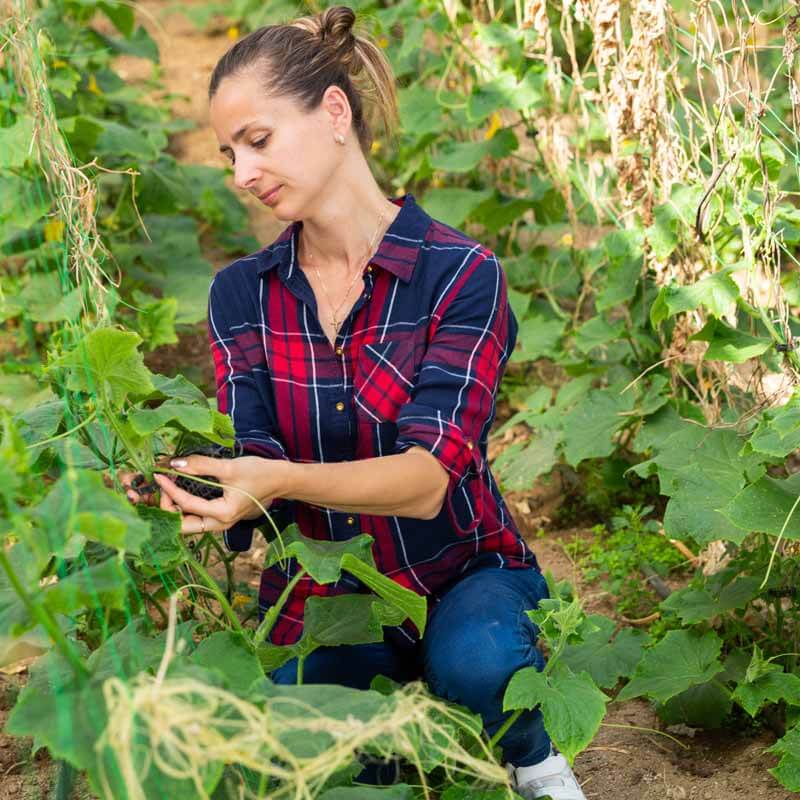
Cukes (Curcumis sativus) are natural-born climbers, equipped with curlicue tendrils that cling to whatever structure they’re scaling. Consequently, they’re a natural choice for training up a sturdy trellis or fence. Less weighty types such as pickling cukes are often the best choice. A few varieties such as ‘Japanese Climbing’ have been bred expressly to grow as vines. Of course, you’ll want to avoid bush cucumbers, which are bred not to climb. The small-fruited, heat-tolerant Beit-Alpha type cucumbers are also recommended. The easy, crisp, and delicious ‘Diva‘ is a good one to start with. (Click here to learn more about growing cucumbers.)
Melons

Cantaloupes (Curcumis melo), watermelons (Citrullus lanatus), and many other melons have vining habits and work well as climbers. The average cantaloupe or small-fruited watermelon (such as ‘Sugar Baby’) will require something much sturdier than a stake-and-twine trellis. Four-by-four posts and heavy-gauge wire are more like it. (Click here to learn more about growing melons.)
Gourds

Bottle and swan gourds (Lagenaria siceraria), luffa (Luffa aegyptiaca), and a number of other gourd species grow on rampant vines that benefit from the support of a sturdy trellis or other structure. With their fanciful shapes and colors, gourds are a kick to grow, and kids of all ages love them. Favorites include ‘Bird House‘, ‘Big Apple’, ‘Bushel Basket’, and Luffa for homegrown skincare.
Happy climbing!


